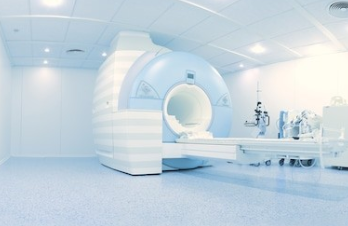扫一扫 添加小助手
服务热线
13818320332
扫一扫 关注我们
 WHO Working document QAS/20.849
WHO Working document QAS/20.849
Points to consider on the different approaches – including HBEL – to establish carryover limits in cleaning validation for identification of contamination risks when manufacturing in shared facilities
使用共用设施生产时清洁验证中为识别污染风险而建立残留限度的不同方法—包括HBEL—考量要点
1. Introduction and background 概述与背景 4
2. Scope 范围5
3. Glossary 术语 5
4. Traditional approach传统方法 6
5. New approaches 新方法 6
5.1 Documentation 文件记录7
5.2 Equipment 设备7
5.3 Detergents and solvents 清洁剂和溶剂 7
5.4 Sampling 取样 8
5.5 Cleanability studies 清洁能力研究8
5.6 Risk assessment and risk control 风险评估和风险控制 9
5.7 Technical and organizational controls 技术和组织控制措施 9
5.8 Health Based Exposure Limits (HBELs) setting 基于健康的暴露限度(HBEL)设置 9
5.9 Acceptance criteria 可接受标准 11
5.10 Grouping by therapeutic use 根据治疗用途分组 12
5.11 Analytical procedures 分析方法 12
5.12 Data integrity 数据完整性 13
5.13 Cleaning validation and cleaningverification 清洁验证和清洁核查 13
5.14 Visually clean 目视清洁 14
5.15 Cleaning verification and processcapability 清洁核查和工艺能力 14
5.16 Personnel 人员 14
5.17 Quality metrics and performance indicators 质量量度和性能指标 14
5.18 Life cycle 生命周期 15
References 参考文献 16
1. Introduction and background 概述与背景
The World Health Organization (WHO) has published the guideline entitled Good Manufacturing Practices for pharmaceutical products: main principles in the WHO Technical Report Series, No. 986, Annex 2, 2014 (1).
WHO在2014年TRS 986附录2发布了题为“药品GMP:主则”的指南。
The WHO Supplementary guidelines on good manufacturing practice: validation were published in 2006 and were supported by seven appendices. In 2019, the WHO Good manufacturing practices: guidelines on validation (2) were updated and republished. Some of the seven appendices were also individually updated between 2013 and 2019:
WHO的“GMP补充指南:验证”于2006年发布,有7个附录作为支持文件。2019年,WHO的“GMP:验证指南”进行了更新并重新发布。7个附录中有几个分别于2013年和2019年进行了更新。
Appendix 1. Validation of heating, ventilation and air conditioning systems (3).
附录1:HVAC系统的验证
Appendix 2. Validation of water systems for pharmaceutical use (4).
附录2:制药用水系统的验证
Appendix 3. Cleaning validation (5).
附录3:清洁验证
Appendix 4. Analytical procedure validation (6).
附录4:分析方法验证
Appendix 5. Validation of computerized systems (7).
附录5:计算机化系统的验证
Appendix 6. Guidelines on qualification (8).
附录6:确认指南
Appendix 7. Non-sterile process validation (9).
附录7:非无菌工艺验证
Appendix 3, relating to cleaning validation (5), was not updated at that time. Its revision, however, was discussed during an informal consultation held in Geneva, Switzerland, in July 2019. The outcome of the discussion was presentedto the WHO Expert Committee on Specifications for Pharmaceutical Products (ECSPP) meeting in October 2019. The ECSPP acknowledged the importance of harmonization in regulatory expectations with regards to cleaning validation approaches. The Expert Committee recommended a “Points to consider” document be prepared in order to describe the current approaches used in cleaning validation and highlighting the complexities involved in order to establish a common understanding. A revision of the relevant appendix would then be considered by the Expert Committee thereafter.
与清洁验证有关的附录3当时未更新。但在2019年7月瑞士日内瓦的非正式沟通期间对其修订进行了讨论,讨论结果于2019年10月提交给了ECSPP会议。ECSPP了解清洁验证方法的监管要求保持一致的重要性,因此专家委员会建立起草一份“考量要点”文件,以阐述当前清洁验证中所用方法,强调其所涉及的复杂性,以求对此达成共识。鉴于此,专家委员会随后考虑要对相关附录进行修订。
Many manufacturers produce products in multi-product facilities where there is arisk of contamination and cross-contamination. Some of the main principles of good manufacturing practices (GMP) include the prevention of mix-ups and the prevention of contamination and cross-contamination. It is therefore important that manufacturers identify all risks for contamination and cross-contamination and identify and implement the appropriate controls to mitigate these risks. These controls include, for example, technical and organizational measures, dedicated facilities, closed systems, cleaning and cleaning validation.
许多生产商会在多产品设施中生产多个产品,这时就会存在污染和交叉污染的风险。优良生产规范(GMP)的一些重要原则包括有防止混淆和防止污染与交叉污染,因此生产商识别所有污染与交叉污染,识别实施适当控制措施以降低这些风险就非常重要。这些控制措施包括例如技术和组织措施、使用专用设施、封闭系统、清洁和清洁验证。
2. Scope 范围
The scope of this document is to discuss the different possible approaches –including methods that account for pharmacological and toxicological data (Health-Based Exposure Limits {HBEL}) – that could be used when establishing safe Carryover limits when manufacturing in shared facilities.
本文件的范围是讨论在为使用共用设施生产建立安全残留限度时可采用的不同方法—包括应用药理学和毒理学数据(基于健康的暴露限(HBEL))的方法。
This document further provides clarification on cleaning validation and presents points to consider when reviewing the current status and approaches to cleaning validation in multiproduct facilities. It reflects the current regulatory guidance and expectations. It further focuses on approaches where HBELs setting need to be considered in cleaning and cleaning validation approaches.
本文还对清洁验证进行了澄清,提出回顾多产品设施中当前清洁验证状态和方法的考量要点。它反映了当前的监管指南和要求。其中还关注了清洁和清洁验证方法中需要考虑HBEL时的方法。
The principles should be applied inmanufacturing facilities with active pharmaceutical ingredients (APIs) and finished pharmaceutical products (FPPs).
在API和FPP生产设施中应使用这些原则。
This document should be read in conjunction with the main GMP text and supplementary texts on validation (1-10).
本文应与GMP主则文件和验证补充文件一起解读。
英文原文官网下载
https://www.who.int/medicines/areas/quality_safety/quality_assurance/QAS20_849_points_to_consider_on_cleaning_validation.pdf?ua=1
中英文下载链接
链接:https://pan.baidu.com/s/12O6UYBLScfo-uNposUKFaA
提取码:42ks
文章来源:蒲公英制药论坛
本网站刊载的所有内容,包括文字、图片、音频、视频、软件等,如非标注为“原创”,则相关版权归原作者所有,如原作者不愿意在本网站刊登相关内容,请及时通知本站,我们将第一时间予以删除。